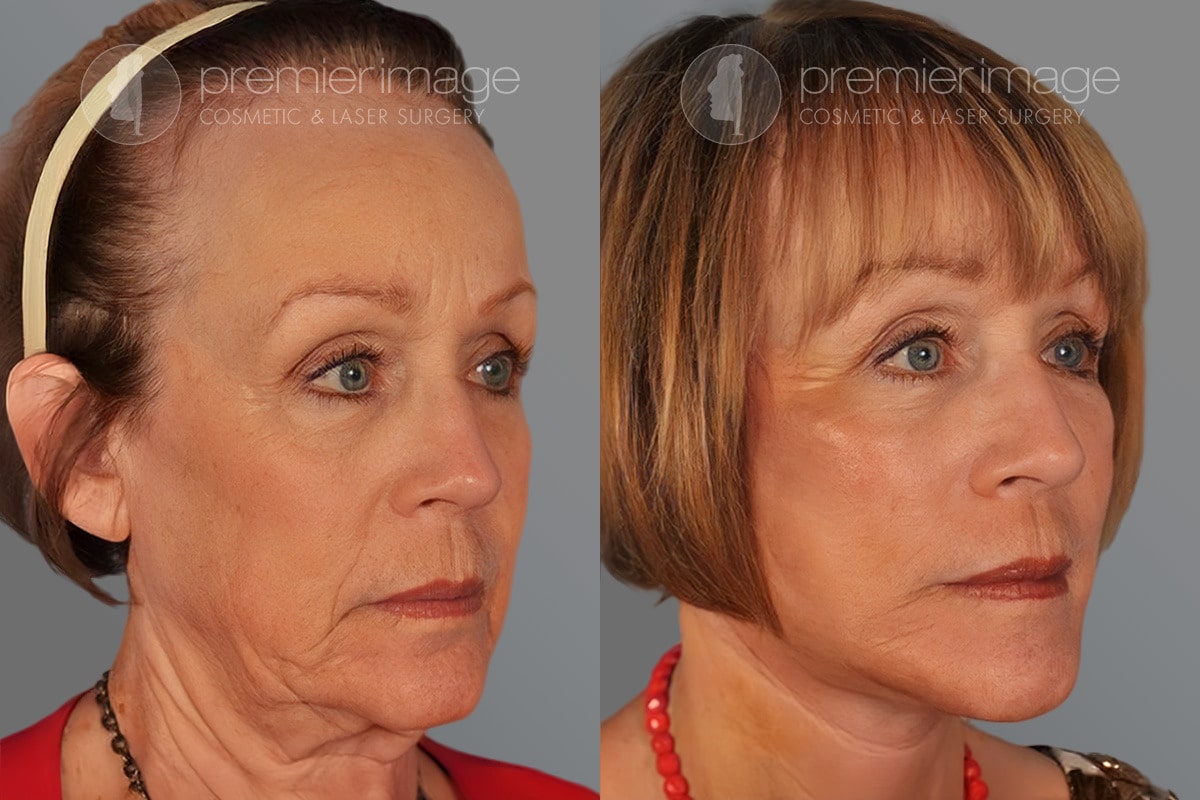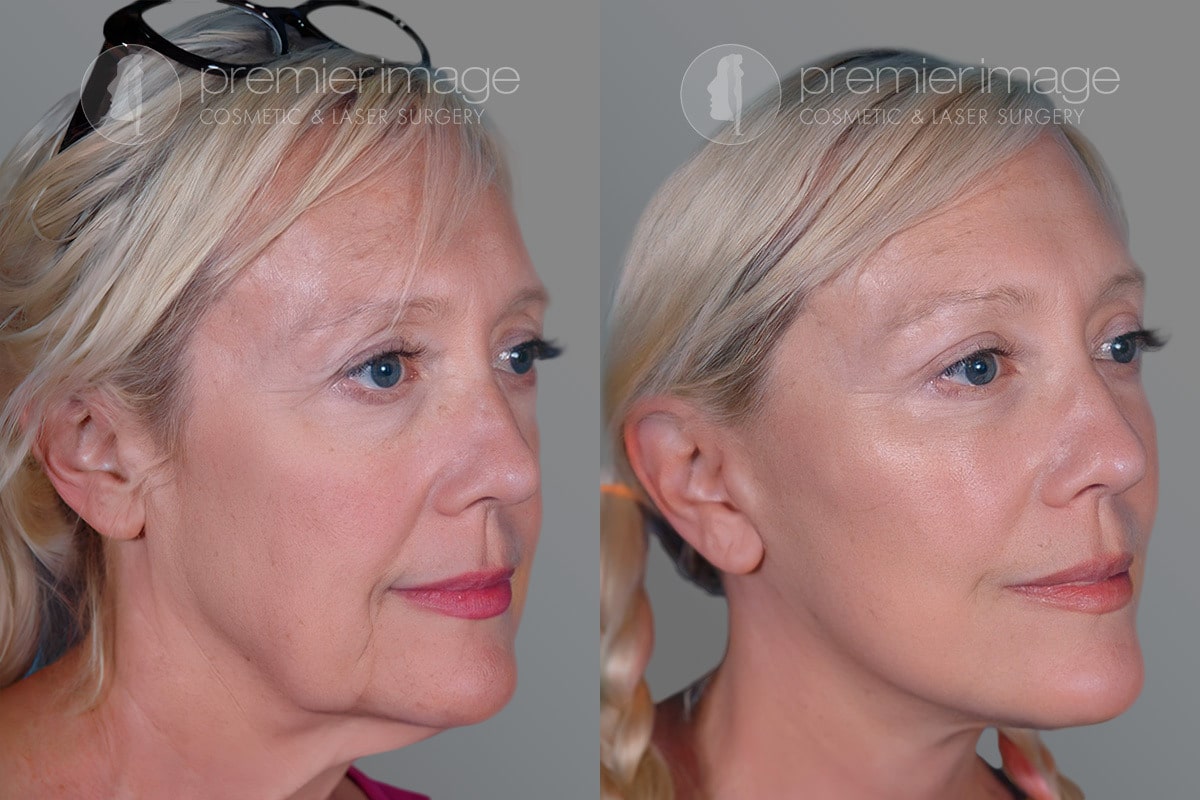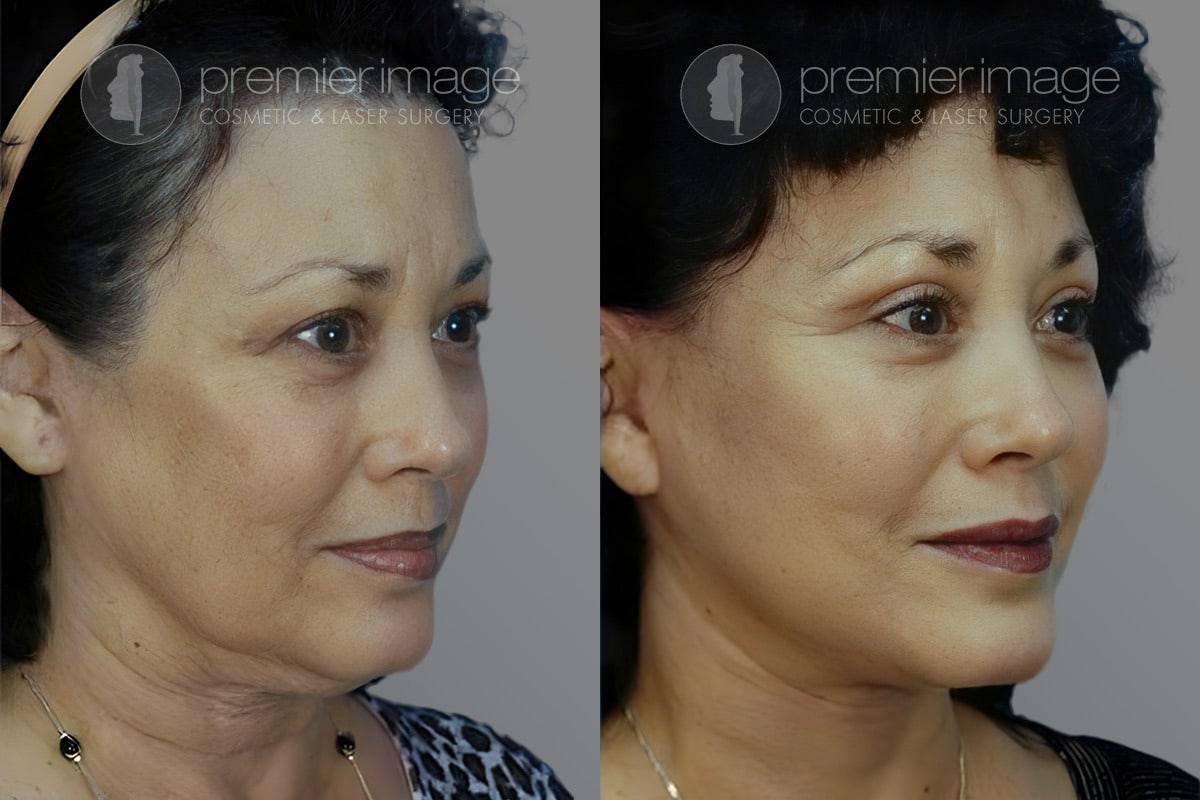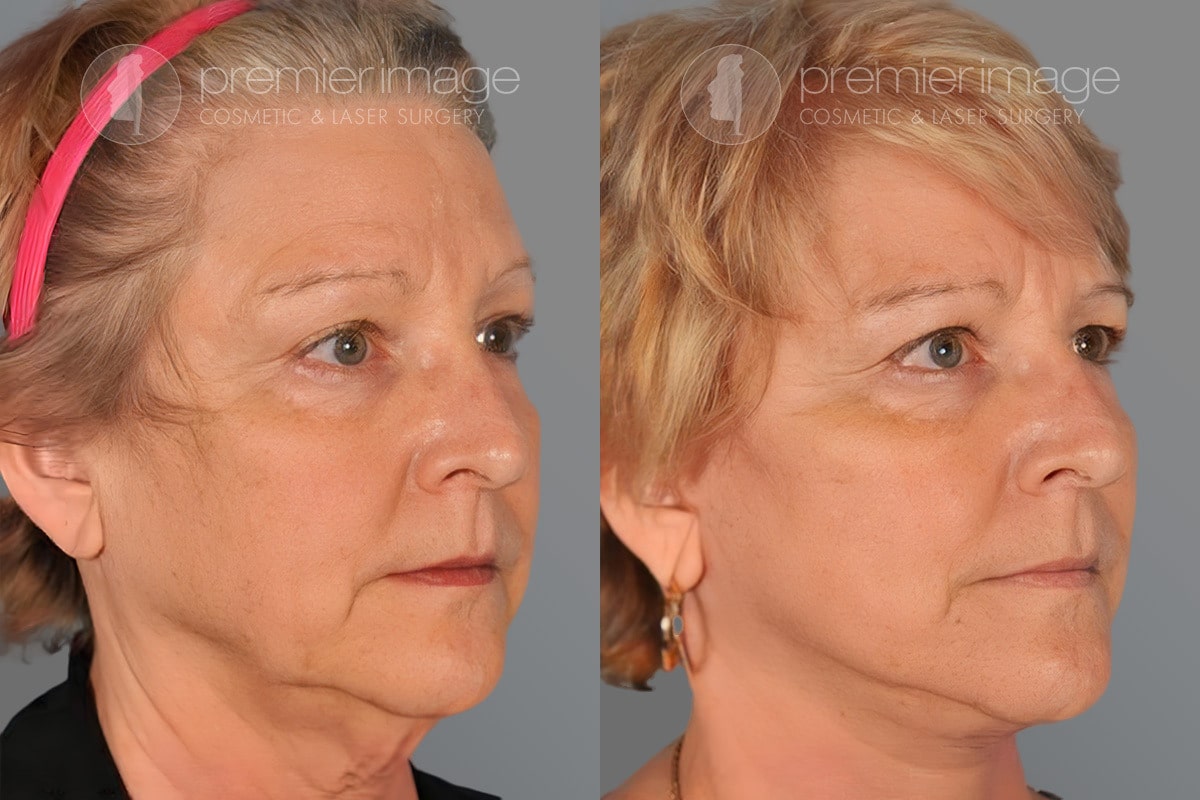Thinking about a neck lift but worried about the scars? You’re not alone. One of the most common concerns among patients considering this popular rejuvenation procedure is what kind of scarring they can expect—and how visible those scars might be in the long term.
Fortunately, with today’s surgical techniques and proper aftercare, neck lift scars are more discreet and manageable than ever before. Whether you’re in the early stages of considering this cosmetic procedure or you’re already planning your neck lift recovery, understanding the ins and outs of scarring can help you make informed choices and feel confident in your results.

Understanding Neck Lift Surgery Scars
Neck lift scars are the result of incisions made to tighten and reposition the skin and underlying muscles of the neck and jawline. These incisions allow the surgeon to remove excess skin and fat, which naturally leads to some degree of scarring. The appearance and healing of these scars depend on several factors, including surgical technique, skin type, and how well the wounds are cared for during recovery. With strategic incision placement and proper healing, these scars are often hidden or fade significantly over time.
Where Are the Incisions Usually Located?
Similar to facelift procedures, the neck lift incisions are typically made behind the ears and sometimes extend slightly into the hairline or under the chin. These locations are strategically chosen to keep scars as inconspicuous as possible, often hidden in natural creases or shadowed areas. The placement allows the surgeon to tighten underlying muscles and remove loose skin without leaving highly visible marks.
How Long Do Neck Lift Scars Take to Heal?
Neck lift scars typically begin to fade and flatten within 6 to 12 months following surgery. Redness and swelling are common early on, but they usually subside within the first few weeks. Most scars gradually soften and lighten with time, and although everyone heals at their own pace, well-cared-for scars often become much less noticeable by the end of the first year.
Neck Lift Scar Healing Stages
Understanding how neck lift scars evolve over time can help you set realistic expectations and feel more in control throughout the healing process. Here’s a general timeline of what to expect:
First few weeks
During the initial healing stage, you may notice mild swelling and a red, raised appearance at the incision sites. This is a normal part of the healing process as the neck skin begins to close and inflammation gradually subsides.
Initial healing stage
1-3 months
As your body continues to heal, the scars will gradually start to flatten and lose their initial redness. You may notice a transition from raised and firm to softer and lighter in color, signaling that deeper healing is underway.
Scars will gradually start to flatten
3-6 months
By this stage, most patients notice a significant reduction in scar visibility. The scars usually become smoother, flatter, and closer in color to the surrounding skin. While they may still be detectable up close, they are often subtle enough to go unnoticed in everyday life.
Scars become smoother
6-12 months
During this time, scars continue to become less noticeable as the skin strengthens and pigmentation evens out. Any lingering redness or texture usually improves significantly, marking the final stretch of the active healing phase before long-term results stabilize.
Less noticeable as the skin strengthens
1 year or more
By this point, most scars have matured completely, taking on their final appearance. While they may still be faintly visible upon close inspection, they typically blend well with the surrounding skin and are often overlooked in day-to-day interactions. For many, this marks the full resolution of the healing journey.
Their final appearance

Secure Your Safe Procedure Experience with Dr. Louis DeJoseph
Join our satisfied clients who’ve experienced safe, effective treatments.
Preventing and Minimizing the Appearance of Scars
Even though scarring is an expected part of the healing process, there are many ways to reduce its visibility. By making smart decisions before and after surgery—from selecting the right surgeon to supporting your skin’s natural recovery—you can significantly influence how your scars heal and fade.
Choosing the Right Surgeon
The foundation for minimal, discreet scarring starts with selecting the right surgeon. A skilled facial plastic surgeon understands how to place incisions strategically, handle tissue gently, and use closure techniques that reduce tension on the skin—resulting in smoother healing and less noticeable scars. Always look for a board-certified specialist with a strong record of successful neck lift outcomes.
Skin Type and Healing Response
Everyone’s skin heals differently, and your unique skin type plays a big role in how visible your neck lift scars may be. People with darker skin tones may be more prone to hyperpigmentation or raised scars, while those with very fair skin might notice redness that lingers longer. Understanding your skin’s natural response to injury can help guide both pre- and post-operative care and set realistic expectations for healing. This awareness also informs your next steps—especially when planning your recovery and scar management routine.

Post-Operative Scar Management
Once the surgery is complete, your role in the healing process becomes just as important. Proper post-operative care can make a major difference in how your scars mature. By following your surgeon’s guidelines and avoiding habits that disrupt healing, you’ll support smoother, more discreet results.
Proper Wound Care After Neck Lift Surgery
Taking care of your incisions during the healing period is essential to minimize scarring and reduce the risk of infection. By being consistent with your wound care routine and following your surgeon’s instructions closely, you help support your skin’s natural wound healing process and encourage more refined, less noticeable scars. Here are a few key steps to proper wound care after a neck lift:
- Keep the area clean and dry: Gently cleanse the incision area as instructed, usually with a mild, non-irritating solution.
- Follow your surgeon’s post-operative instructions: Replace dressings only when advised and avoid touching the wounds with unwashed hands.
- Take it easy during recovery: Limit movements that stretch the neck area, such as looking sharply side to side or tilting the head back.
- Protect from sun exposure: UV rays can darken healing scars, so always use sunscreen or keep the area covered.
- Watch for signs of infection: Redness, warmth, discharge, or a foul odor may indicate infection—contact your surgeon if any appear.
Recommended Skincare Products for Scars
Using the right skincare products and scar creams can help speed up healing and minimize the appearance of neck lift scars over time. These products are designed to hydrate, protect, and promote healthy skin regeneration. Incorporating them into your recovery routine can make a noticeable difference in how your scars fade and mature.
- Silicone gels or sheets: Clinically proven to flatten and soften scars by creating a protective barrier and retaining moisture.
- Vitamin C serums: Brighten skin and help fade pigmentation while boosting collagen production.
- Moisturizers with hyaluronic acid: Keep the skin hydrated, which is key to maintaining elasticity and preventing scar stiffness.
- Sunscreen (SPF 30 or higher): Essential to prevent scars from darkening due to sun exposure.
Habits That Interfere with Scar Healing
Even with proper wound care and high-quality products, certain habits can hinder your healing and worsen the appearance of scars. Being aware of these behaviors—and avoiding them—can make a significant difference in how well your skin recovers after a neck lift.
- Smoking: Nicotine restricts blood flow and slows tissue repair, increasing the risk of thickened, poorly healed scars.
- Picking or scratching at scabs: Disturbing healing skin can lead to infections and worsen scarring.
- Skipping follow-up appointments: Regular check-ins allow your surgeon to monitor healing and make timely adjustments to your care plan.
- Inconsistent skincare routine: Neglecting recommended products or routines can delay scar maturation and compromise your final results.
Before and After Photos


* Each patient is unique and individual results may vary.
Treatments for Visible Neck Lift Scars
If you’re left with more visible scars after your neck lift procedure, don’t worry—there are effective treatment options available.
Laser Therapy and Microneedling
For patients looking to reduce the visibility of lingering neck lift scars, laser therapy and microneedling offer two of the most effective non-surgical scar treatments. Laser scar removal consists of helping break down scar tissue and encouraging fresh collagen production, gradually improving both tone and texture. Microneedling works in a similar way, using tiny needles to stimulate the skin’s natural repair response. These minimally invasive options are often recommended when scars remain visible after the skin has fully healed, and they’re especially popular for their precision, short recovery time, and natural-looking results.
When to Consider Surgical Scar Revision
While many neck lift scars heal to be discreet or nearly invisible, some may remain raised, thickened, or noticeably pigmented. In these cases, scar revision surgery can help. This surgical procedure involves removing the scar tissue and carefully re-closing the incision to create a finer, more subtle line. It’s typically considered once the scar has fully matured—usually after 12 months—and when other non-invasive procedures haven’t provided satisfactory results.
Before and After Photos


* Each patient is unique and individual results may vary.
How to Choose the Right Neck Lift Surgeon
The key to minimizing scarring and achieving the best aesthetic outcome starts with choosing a skilled, experienced plastic surgeon. Proper incision placement, gentle surgical technique, and a personalized approach all reduce trauma to the skin and promote better healing outcomes.
At Premier Image Cosmetic and Laser Surgery, Dr. Louis DeJoseph offers a level of expertise that few can match. As one of the only triple board-certified facial plastic surgeons in the Atlanta area—and a recognized leader in both laser technology and facial rejuvenation—Dr. DeJoseph blends advanced technique with an artistic eye. He regularly performs neck lift surgeries using refined methods that prioritize both stunning results and minimal scarring. Ready to take the next step? Call us at 770-457-6303 or visit our contact page to schedule your consultation today.